Namwon Aircraft & Space Observatory (남원항공우주천문대)
15.2 Km 17093 2024-04-07
48-63, Yangnim-gil, Namwon-si, Jeonbuk-do
+82-63-620-6900
Chosen as a government funded project, Namwon Aircraft & Space Observatory was granted 4.6 billion won by the Ministry of Science, ICT and Future Planning in 2006 for project development.
The three-story observatory, with a total area of 6,532 square meters, has an exhibition hall showing the history of space aviation, an aviation experience hall, and a 10-meter-wide dome showing images of the night sky. The secondary observatory is equipped with a 600 millimeter telecope and other astronomical telescopes ranging in focal length from 125 millimeter to 350 millimeter for observing Namwon's night sky. In addition to the telecopes, retired combat planes from the air force, including the main fighter plane Phantom from the 1970s, are displayed outside.
Namwon Aircraft & Space Observatory offers programs such as tours and experience programs for groups. These include a 4D film experience of the sun and celestial bodies, a virtual aviation experience, and lectures about astronomy, all of which can accommodate up to 120 people per session. A variety of classroom learning activities are also offered in the summer to attract more visitors.
Gwanghalluwon Garden (광한루원)
15.3 Km 25193 2024-04-07
1447, Yocheon-ro, Namwon-si, Jeonbuk-do
+82-63-625-4861
Originally known as Gwangtongnu, Gwanghalluwon Garden was built by Hwang Hui Jeongseung in 1419 during the reign of Joseon dynasty’s King Sejong. Because of its outstanding beauty, Governor Jeong In-ji gave the garden the name ‘Gwanghallu’ in 1444, comparing it to a garden from the palace on the moon. It is famous as the location where Lee Mong-ryong and Chunhyang (two lovers from a well-known Korean folk story) first met. In the 1920s Chunhyangsa Temple was established in the neighboring area and a portrait of Chunhyang was hung in a place of honor. The garden is the venue of the Chunhyangjae Festival every spring, celebrating the deep and lasting love of the famous couple. The area around Gwanghalluwon Garden is full of many attractions, includes Ojakgyo Bridge, symbolizing the bridge connecting Chilseok and Gyeonwu from the traditional story of Chilseok, as well as Chunhyang Hall, Wolmae-jip (house of Chunhyang's mother), Wanwoljeong Pavilion, Yeongjugak Pavilion, Samsinsan and many other traditional buildings.
Gurye Cheoneunsa Temple (천은사(구례))
15.3 Km 14499 2021-10-02
209, Nogodan-ro, Gurye-gun, Jeollanam-do
+82-61-781-4800
Located north of Gurye on Jirisan Mountain, and built during the Unified Silla Period, Cheoneunsa Temple is one of the three great Buddhist temples of Jirisan Mountain. Cheoneunsa Temple is believed to have been built by Monk Deokun and Monk Seru from India in AD 828 during the 3rd year of King Heungdeok. Because it initially laid next to spring water as clean and cold as a morning dew, the temple was also called Gamrosa, meaning Sweet Dew Temple. The spring water was rumored to clean one’s body and soul, leading to crowd of Buddhist monks to visit the temple. During King Chungryeol’s reign, the temple was named the Best Temple in the south.
The temple was burned down during the Imjin War (1592-1598) and then later rebuilt and renamed Cheoneunsa. Legend has it that while the temple was being rebuilt, a large serpent often came out of the spring. When the serpent was finally captured and killed, the spring waters suddenly dried up. Hence the name Cheoneunsa, meaning Disappearance of Spring Water, was given.
Gwanghallu Pavilion (광한루)
15.3 Km 17522 2024-04-07
1447, Yocheon-ro, Namwon-si, Jeonbuk-do
+82-63-620-6172
Rebuilt in 1638 (the 16th year of King Injo), Gwanghallu Pavilion is one of the Joseon dynasty’s most exemplary structures. The pavilion was constructed in 1419 by Hwang Hui, a noted prime minister in the early Joseon dynasty, during his exile to Namwon. The name of the pavilion at that time was Gwangtongnu. In 1434, while the pavilion was undergoing reconstruction, scholar and politician Jeong In-ji called it Gwanghallu after Gwanghancheongheobu, the mythical palace on the moon. Designated as Treasure No. 281, the pavilion is one of four major pavilions known for excellent craftsmanship, along with Yeongnamnu Pavilion (Miryang), Chokseongnu Pavilion (Jinju), and Bubyeoknu (Pyeongyang). Gwanghalluwon Garden, which consists of Gwanghallu Pavilion, a pond, Bangjangjeon Pavilion, and Yeongjugak Pavilion form Historic Site No. 33.
Gurye Sansuyu Festival (구례산수유꽃축제)
15.4 Km 42473 2024-02-27
45 Sanggwan 1-gil, Gurye-gun, Jeollanam-do
+82-10-2079-4546
Gurye Sansuyu Festival is an annual spring flower festival. Major programs include exhibition of local products made from sansuyu (cornus fruit), while other programs include traditional music and dance performances, experience programs, and fireworks.
Namwonyechon by Kensington [Korea Quality] / 남원예촌 [한국관광 품질인증]
15.4 Km 1191 2024-04-07
17 , Gwanghanbuk-ro, Namwon-si, Jeonbuk-do
+82-63-636-8001
Namwonyechon in Namwon, Jeollabuk-do, combines the beauty of traditional hanok with the convenience of a hotel. In summer, rooms with daecheongmaru are popular, and in winter, you can cozy up to an oakwood fire. A hanbok experience, pansori and gayageum performances, and a traditional games experience are provided free of charge. Residents get a free entry pass with mapae(a certificate to allow officials to use horses) to nearby Gwanghalluwon Garden, Chunhyang Theme Park, and Baekdudaegan Ecological Education Center. Room minibars are also free of charge.
Stayriun [Korea Quality]스테이리운[한국관광 품질인증]
15.5 Km 0 2024-04-07
53-7 , Gosaem-gil, Namwon-si, Jeonbuk-do
+82-507-1493-0660
Stayriun is a private hanok adjacent to the famous Gwanghalluwon Garden in Namwon, Jeollabuk-do. Accommodation is in the sarangchae and the main building. The sarangchae is a cozy space for two people with a small yard and a wooden maru where you can enjoy a cup of tea. The main building has high ceilings, large windows and a terrace, giving a sense of openness; the floor is neatly finished in wood and stone. There’s a beam projector, and an indoor spa.
Cheonghakdong Hoegwan (청학동회관)
15.5 Km 16134 2024-04-07
31 Gwanseodang-gil, Namwon-si, Jeonbuk-do
This restaurant has 60 years of tradition. As a traditional Korean house, it has a small pond with a watermill. The restaurant serves Namwon’s authentic Korean table d’hote, featuring about 20 dishes. The representative Cheonghakdong Set Menu includes Jeolla region's delicacies, such as hongeo samhap (skate, pork, and kimchi combo), braised galbi, Yeonggwang gulbi (dried yellow croaker), and japchae. The restaurant also has private rooms for family and groups who wish to dine in a more quiet manner.
The Face Shop [Tax Refund Shop] (더페이스샵)
15.6 Km 0 2024-04-22
385-16, Nammun-ro, Namwon-si, Jeollabuk-do
-
Namwon Newly-appointed Governor’s Procession (남원 신관사또부임행차)
15.6 Km 1199 2024-04-07
17, Yangrim-gil, Namwon-si, Jeonbuk-do
• 1330 Travel Hotline: +82-2-1330 (Korean, English, Japanese, Chinese) • For more info: +82-63-633-5353
Namwon Newly-appointed Governor’s Procession is a fusion performance about the parade for celebrating the appointment of Byeon Hak-do as Namwon governor in the story of Chunhyang, set in Gwanghalluwon Garden, one of Namwon’s representative cultural resources. The event connected to Gwanghalluwon Garden and the Chunhyang Theme Park takes place from April to October every year, giving various spectacles and activities to visitors. The parade starts from the Plaza of Love and ends at Gwanghalluwon Garden, where various shows such as Gisaeng Jeomgo, military processional music performance, Yukbang performance, and a fan dance by gisaeng (female entertainers) are performed. In addition, fun activities like experiencing the punishment of the Joseon dynasty, folk games, and a photo event are arranged for visitors. This performance has been designated as a Standing Cultural Tourism Program since 2008.
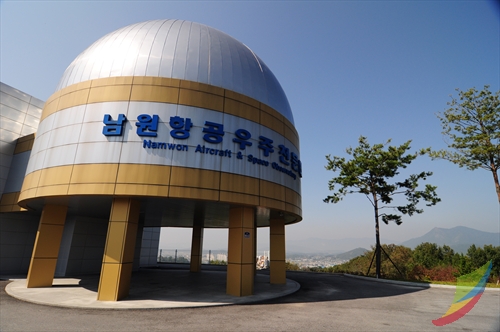
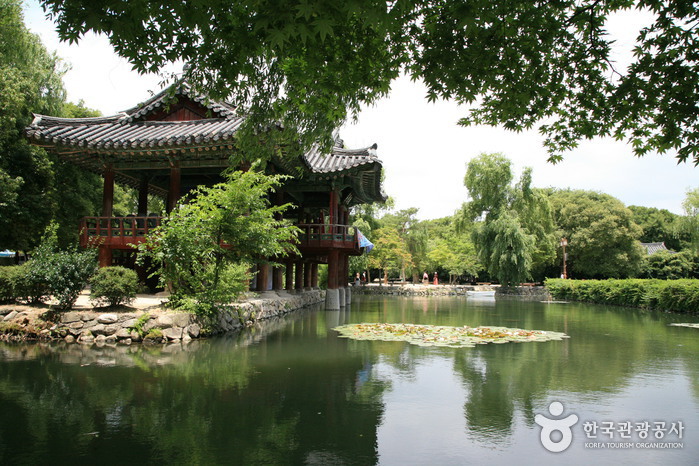

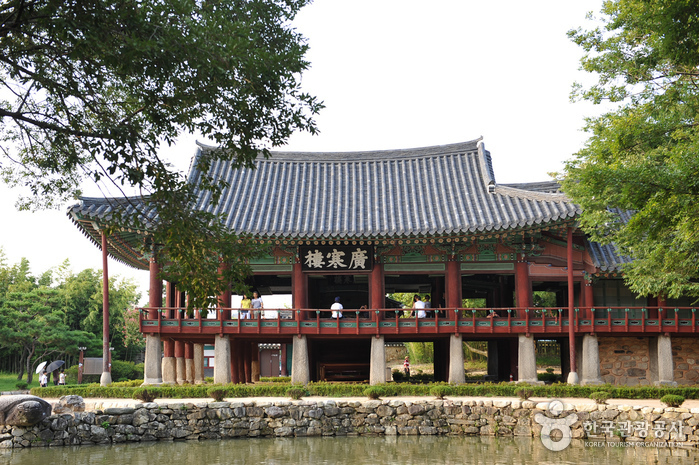
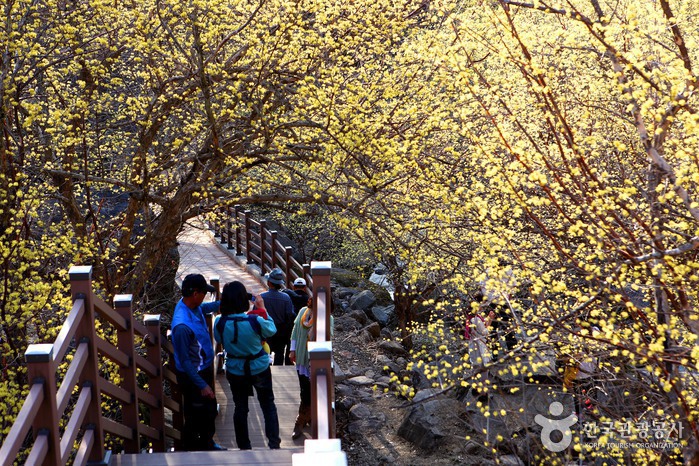
![Namwonyechon by Kensington [Korea Quality] / 남원예촌 [한국관광 품질인증]](http://tong.visitkorea.or.kr/cms/resource/25/2556425_image2_1.jpg)
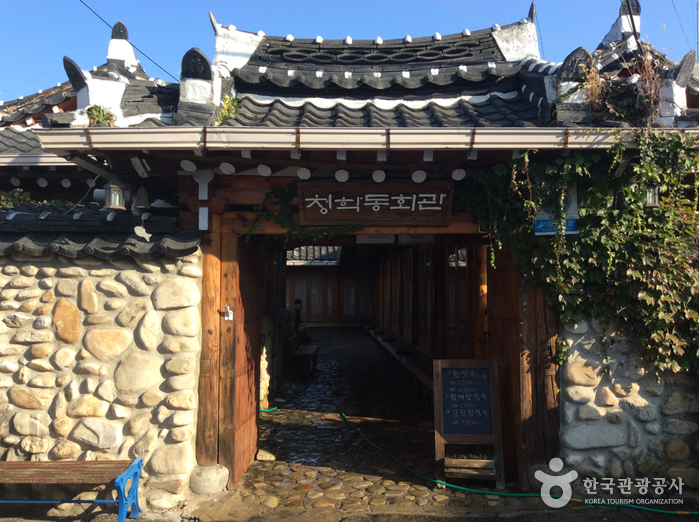
![The Face Shop [Tax Refund Shop] (더페이스샵)](http://tong.visitkorea.or.kr/cms/resource/77/2890977_image2_1.jpg)
 English
English
 한국어
한국어 日本語
日本語 中文(简体)
中文(简体) Deutsch
Deutsch Français
Français Español
Español Русский
Русский